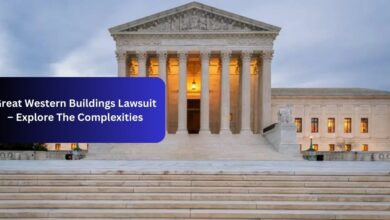The Future of Urban Living: Trends in Sustainable Real Estate Development
The Future of Urban Living: Trends in Sustainable Real Estate Development
In recent years, the concept of sustainable real estate development has gained significant traction as cities around the world grapple with issues of urbanization, climate change, and resource depletion. The future of urban living is being shaped by innovative trends in sustainable real estate development that prioritize environmental responsibility, social equity, and economic viability. This article explores the key trends driving the future of urban living and how sustainable real estate development is reshaping our cities.
1. Green Building Practices
Green building practices are at the forefront of sustainable real estate development. From energy-efficient design to the use of eco-friendly materials, green buildings are reducing their environmental impact while providing healthier living spaces for residents. Features such as solar panels, rainwater harvesting systems, and green roofs are becoming increasingly common in urban developments.
2. Mixed-Use Developments
Mixed-use developments combine residential, commercial, and recreational spaces in a single area, reducing the need for long commutes and promoting a sense of community. By creating walkable neighborhoods with access to amenities, mixed-use developments are fostering sustainable urban living.
3. Transit-Oriented Development
Transit-oriented development focuses on creating compact, walkable communities centered around public transportation hubs. By encouraging residents to use public transit, walk, or bike instead of driving, transit-oriented developments reduce carbon emissions and traffic congestion while promoting a healthier lifestyle.
4. Adaptive Reuse Projects
Adaptive reuse projects involve repurposing existing buildings for new uses, preserving their historical and architectural value while reducing waste and carbon emissions associated with demolition. By transforming old warehouses, factories, and office buildings into residential or mixed-use spaces, adaptive reuse projects contribute to sustainable urban development.
5. Smart Cities Technology
Smart cities technology integrates data and digital solutions to improve urban efficiency, sustainability, and quality of life. From smart energy management systems to intelligent transportation networks, smart cities technology is revolutionizing urban living by optimizing resource use and enhancing connectivity.
6. Affordable Housing Initiatives
Affordable housing initiatives aim to provide quality housing options for low- and moderate-income residents in urban areas. By incorporating affordable housing units into new developments or renovating existing properties, sustainable real estate developers are addressing the pressing issue of housing affordability in cities.
7. Resilient Design Strategies
Resilient design strategies focus on building structures that can withstand natural disasters, climate change impacts, and other environmental challenges. By incorporating resilient design features such as flood-resistant construction, green infrastructure, and passive heating and cooling systems, sustainable real estate developers are creating more durable and adaptable urban spaces.
8. Community Engagement and Inclusivity
Community engagement and inclusivity are essential aspects of sustainable real estate development. By involving local residents in the planning and design process, developers can ensure that projects meet the needs and preferences of the community, fostering a sense of ownership and social cohesion.
9. Circular Economy Principles
Circular economy principles promote the reuse, recycling, and repurposing of materials and resources to minimize waste and maximize efficiency. Sustainable real estate developers are embracing circular economy practices by incorporating sustainable materials, implementing waste reduction strategies, and designing buildings for long-term durability and adaptability.
10. Green Certification and Standards
Green certification programs such as LEED (Leadership in Energy and Environmental Design) and BREEAM (Building Research Establishment Environmental Assessment Method) set standards for sustainable building practices and provide recognition for projects that meet specific criteria. By seeking green certification, developers can demonstrate their commitment to sustainability and attract environmentally conscious tenants and investors.
FAQs
1. What are the benefits of sustainable real estate development?
Sustainable real estate development offers numerous benefits, including reduced environmental impact, lower operating costs, healthier living environments, increased property value, and enhanced community resilience.
2. How can sustainable real estate development address climate change?
Sustainable real estate development can help mitigate climate change by reducing greenhouse gas emissions, promoting energy efficiency, conserving natural resources, and adapting to the impacts of a changing climate through resilient design strategies.
3. What role do policymakers play in promoting sustainable urban development?
Policymakers play a crucial role in promoting sustainable urban development by enacting regulations, incentives, and zoning policies that support green building practices, affordable housing initiatives, transit-oriented development, and other sustainable strategies.
4. How can residents contribute to sustainable urban living?
Residents can contribute to sustainable urban living by using public transportation, walking, or biking instead of driving, conserving energy and water, recycling and composting, supporting local businesses, participating in community initiatives, and advocating for sustainable policies.
5. What are some examples of successful sustainable real estate developments?
Examples of successful sustainable real estate developments include the Vauban eco-district in Freiburg, Germany, the BedZED eco-village in London, UK, the Dockside Green community in Victoria, Canada, and the Masdar City project in Abu Dhabi, UAE.
6. How does sustainable real estate development contribute to social equity?
Sustainable real estate development contributes to social equity by providing affordable housing options, creating inclusive communities, promoting access to amenities and services, supporting local businesses, and fostering a sense of belonging and empowerment among residents.

